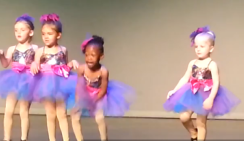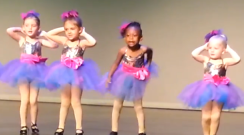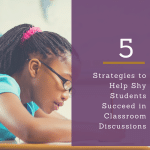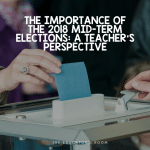[fusion_builder_container hundred_percent=”yes” overflow=”visible”][fusion_builder_row][fusion_builder_column type=”1_1″ background_position=”left top” background_color=”” border_size=”” border_color=”” border_style=”solid” spacing=”yes” background_image=”” background_repeat=”no-repeat” padding=”” margin_top=”0px” margin_bottom=”0px” class=”” id=”” animation_type=”” animation_speed=”0.3″ animation_direction=”left” hide_on_mobile=”no” center_content=”no” min_height=”none”]
You are different from anyone else, and you are defined by those differences. So are students. Each student will learn and perform differently in any classroom. A classroom of a hypothetical 24 students is a classroom of diversity, with 24 individual combinations of learning styles. Teachers differentiate for this wide variety of learners and prepare for all students who have with dissimilar interests and abilities. How dissimilar?
Consider this recent video of a toddler’s dance recital as an example.
At the stage right section of the chorus line, four little girls in festive tutus catch the attention of the videographer in the audience. He records the performance where three dancers of four dancers are dedicated to staying in step and follow the routine they had practiced.
Three dancers of the four dancers synchronize their arm and toe-tapping movements; they obviously know the steps of dance routine. Their performance is juxtaposed with the animated interpretation of another dancer whose enthusiasm for performance is both charming and comical.
…singing and dancing her interpretation…
This dancer, Dancer #3 (third from the left), is whole-hearted in performing her own distinctive dance steps and arm movements while still loosely following the choreographed routine. As the other dancers in the chorus line follow and conform according to direction, Dancer #3 dances to her own distinctive beat.
….expressing herself in movement…

The members of the audience are heard laughing in the background of the video. It is probably safe to say that in the audience watching the recital were the anxious parents, relatives, and friends of all the little girls in the chorus line.
…and celebrating her difference…
Each audience member was routing for their special dancer on stage, and depending on the point of view, each dancer was wonderful. Dancer #3′s family and friends, however, have the evidence to prove that their little girl’s performance was matchless.
Now consider how every classroom has has at least one Dancer #3. All teachers must be prepared to instruct a student or set of students like her who may differ in how they learn and perform. These differences are usually referred to as learning styles and there are numerous different theories about how these styles impact how individuals learn.
One theory (Fleming, 2001) suggests that all learners use one of three common learning styles: visual, auditory, and kinesthetic. Another theory (Gardner) suggests that there are seven different learning styles for learners:
- Visual (spatial): learning using pictures, images, and spatial understanding.
- Aural (auditory-musical): learning using sound and music.
- Verbal (linguistic): learning using words, both in speech and writing.
- Physical (kinesthetic): learning using your body, hands and sense of touch.
- Logical (mathematical): learning using logic, reasoning and systems.
- Social (interpersonal): learning in groups or with other people.
- Solitary (intrapersonal): learning alone through self-study.
Education theorists may suggest even more learning styles, but whatever the learning style, teachers must be prepared to meet all the needs of all the learners in their classrooms. The most recent discussion about learning styles provides the evidence that that all learners benefit when a multitude of learning styles are addressed in a classroom. The education reformer John Hattie’s research in his work Visible Learning places little regard on the practice of individually matching a learning style to each learner, noting that such a practice is only is 41% effective. That effectiveness of addressing learning styles is increased, however, when all there are a multitude of learning styles used regularly in a classroom for all learning styles. There is a positive result when students are stimulated to listen (aural), to watch (visual), and to move (kinesthetic) in class whenever there is new learning. Since addressing all the learning styles is the basis for differentiation in the classroom, teachers must be prepared with activities that stimulate all students.

…while drawing admiration from fellow dancers
Going back to the video and watching the energy of Dancer #3, her teacher would be well-advised to increase kinesthetic learning activities in class whenever possible. Perhaps because of her young age, Dancer #3 is not self-conscious about herself, providing the clearest example of a kinesthetic learner whose learning style is expressed through movement. That expression made a positive contribution to the recital if measured by the reaction of the audience and by the littlest dancer to the right who had been watching out of the corner of her eye. The final frames show this small dancer turn in admiration to the other dancers at a job well done; she holds her hand out as if to congratulate the exuberant Dancer #3. They smile at each other in delight.
Key to understanding the importance of differences is recognizing that this video would not have been the viral hit viewed by millions if Dancer #3 had danced the routine as her dancing teacher had choreographed. Instead, Dancer #3 tapped and sang what she learned and demonstrated her own learning style; she elevated the group’s performance to a different level by dancing to a different beat.
Her dance is a celebration of difference, and a heads up to her teacher(s)…. better get ready![/fusion_builder_column][/fusion_builder_row][/fusion_builder_container]







